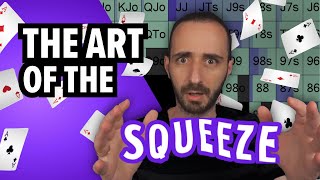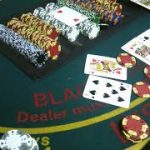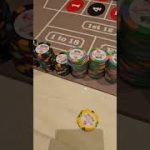Texas Holdem Tips Video Source & Information:
In the modern poker world, any player who’s spent time on the felt has become familiar with stealing; passive tables are much harder to find than they used to be. And since everybody knows and expects this, more and more often, players love to flat in position, and play pots vs the wider ranges they know their opponents have.
Enter the squeeze. The squeeze play is one of the most useful tools that a preflop player has when OOP vs a steal plus flatter(s), but despite its clear utility, there’s been a lot of speculation over the years on the proper strategy for these situations.
In this week’s video, Uri breaks down for us how we should be approaching these situations. He discusses not only what you should be considering when the squeeze is on, but also what the range structures should look like – both as the squeezer and as a potential squeezee.
—————-
https://www.guerrilla.poker is now LIVE! Come check out Uri Peleg’s groundbreaking new poker strategy course, “Red Line – Philosophy and Practice”, to master your red-line and learn little-known solver-approved techniques for beating even the toughest games. Be sure to also check out our Preflop Solutions, for advanced, up-to-date ranges that are applicable to a wide variety of games. (We accept requests!)
Subscribe now so you don’t miss out on great free poker tips!
Invest in your edge!
WEBSITE: www.guerrilla.poker
TWITTER: https://twitter.com/GuerrillaPoker
Source: YouTube








in min 1.32 you say you dont recommend this ranges in our strategies because everyone has diff ranges,sizes… right? Could u pls tell the conditions for this ranges so we can have a better idea to build ranges in diff circumstances
Love these types of vids! Found you through the thinking poker podcast and I find your approach to learning from solvers incredibly refreshing. It has really invigorated my passion for learning the game and given me hope for creativity in poker beyond just trying to replicate a computer.
Thanks man, great video.
great video!
Great. I am suscribed. 👍
10:21…and how do I know if my opponent is polarized or linear?? If I can't know that, then this all is just a time waste.
Thank you. I appreciate your effort.
However, if you gave us few sample hands here that shows how to apply that strategy, we'd learn way more, rather than focusing most of the time at those charts that are nothing but boring. I understand, you brought up the charts to justify what you're talking about. However, Instead of charts, you could simply list the range and adding that it derives from the gto chart.
As a result, at the end the video Im confused how to use it in actual game. Or, your goal here was just to trigger our curiosity and then make us ask for a membership?
(I have brought this up, because you asked for it. Hoping this will help you, too.) Cheers, Uri.
Hey Uri, (or anyone else that wants to chime in) what solver would you recommend buying and why? ( I’m looking for something that has multi way, as well as PLO)
the advice at the end is important: "when looking at solver outputs, we're not trying to prove anything. we already have the answer. we just need to make sense of the patterns and for the patterns to repeat". This advice might seem obvious but is so foundational
Great video but what the heck is up with your audio? There's a faint "buzzy" type of reverberation that seems to pulse with your voice and it's only when you're speaking. I thought it was on my end but it seems to be the video…anybody else hear it?
Maybe it's your pop-screen stand vibrating on the mic?? Idk…a light noise gate might help.